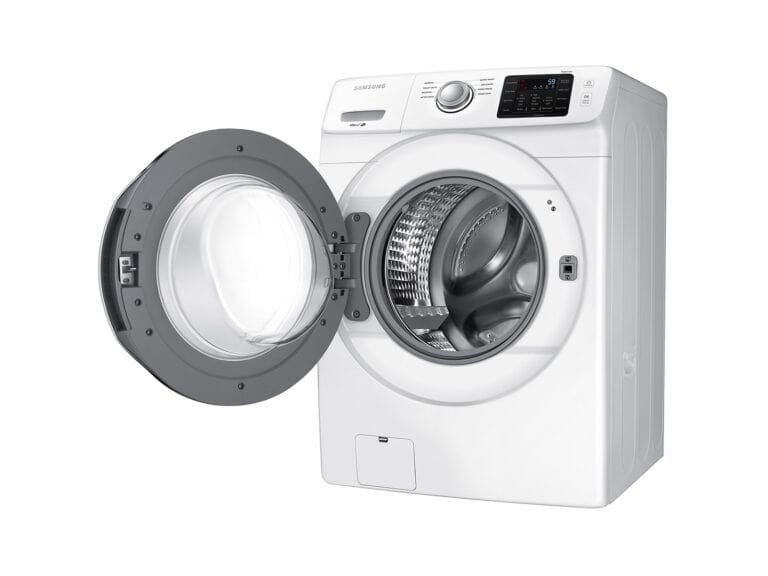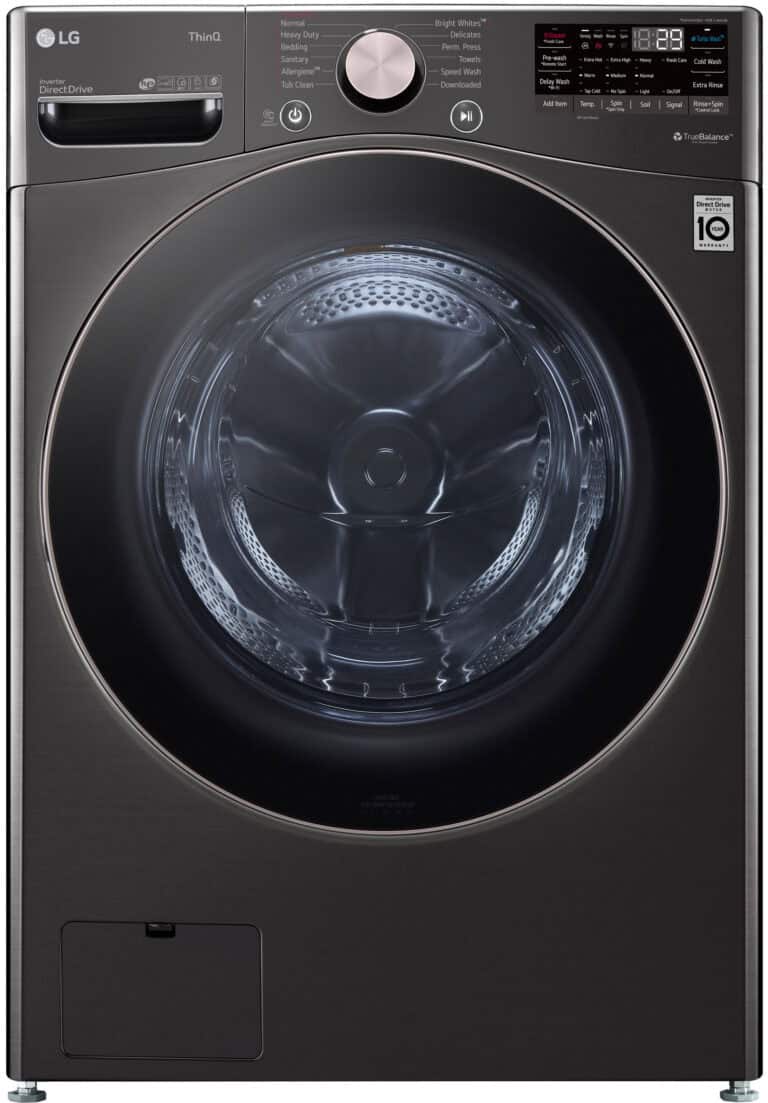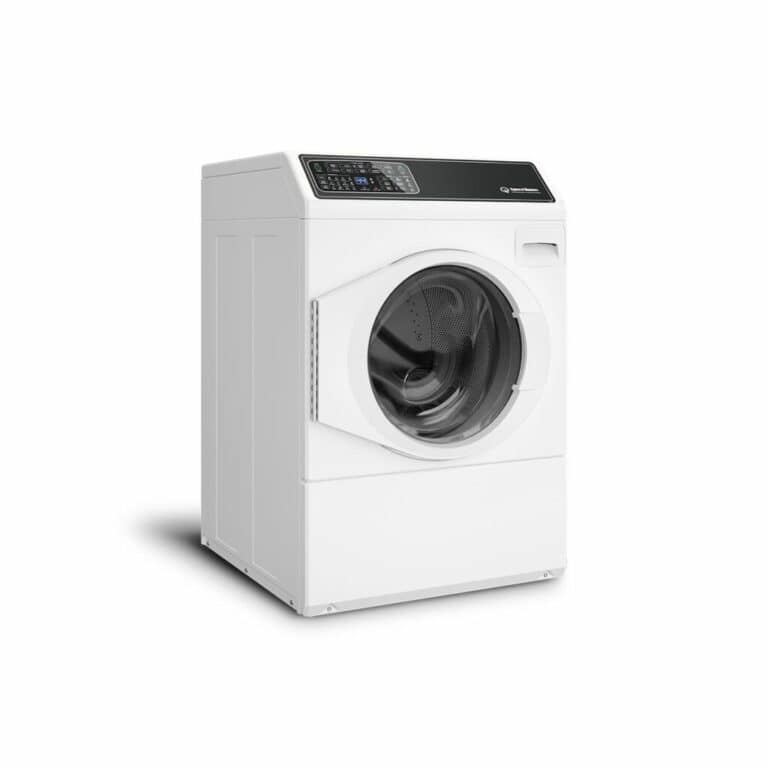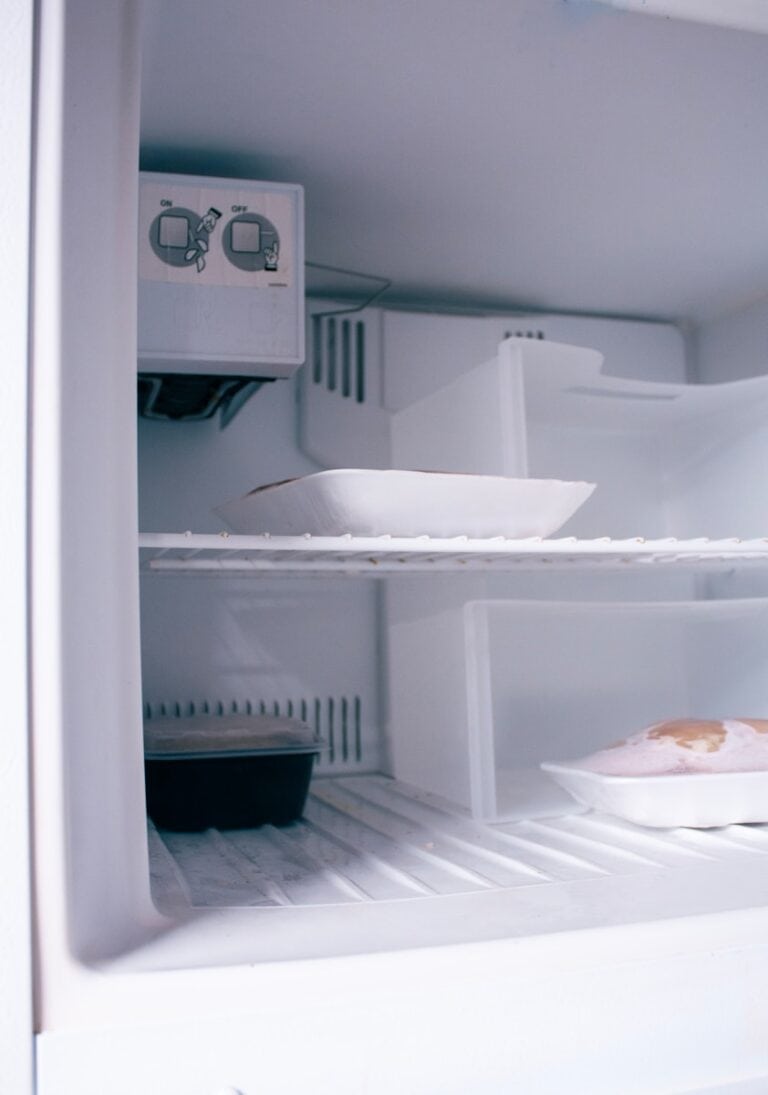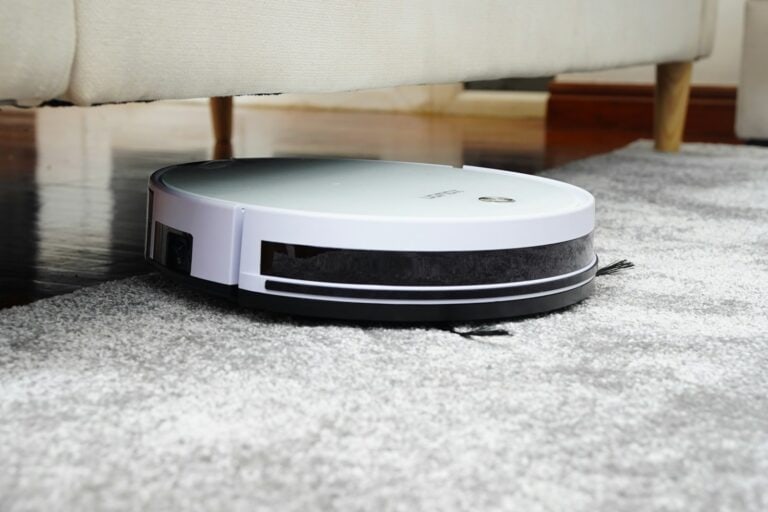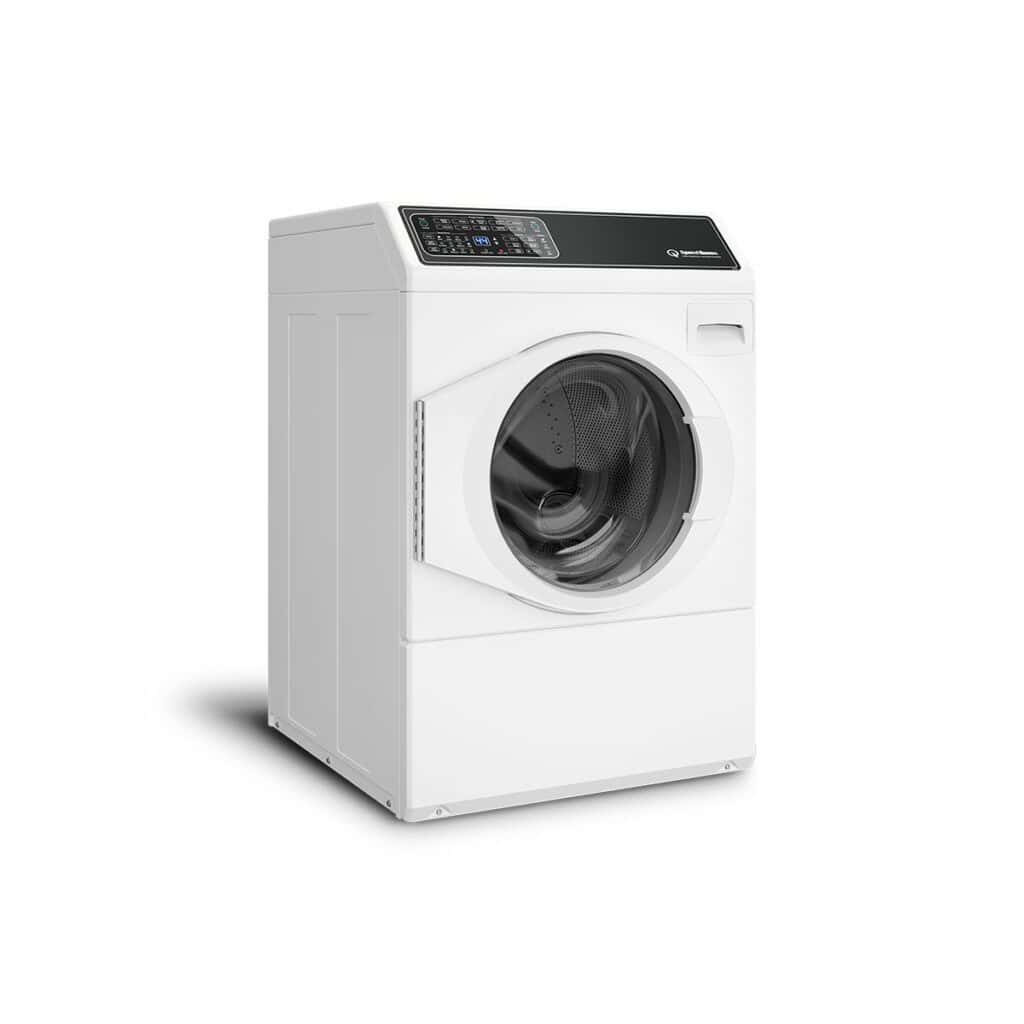
Is your washer leaving you with sopping wet clothes? A washing machine that won’t spin is one of the most common laundry headaches homeowners face. You might be standing there watching your machine fill with water and agitate just fine, but when it comes time for the spin cycle—nothing happens. In most cases, your washer won’t spin either because of a clogged drain, an unbalanced load, a faulty lid switch, or a broken motor coupling.
Before calling a repair technician, there are several simple checks you can do yourself. Many washing machine spin problems can be solved with basic troubleshooting. For example, check if your washer is draining properly—a machine that hasn’t drained won’t start spinning. Also make sure your load is balanced, as an uneven distribution of clothes can trigger safety features that prevent spinning.
Some fixes are as simple as resetting the washer motor or checking that the lid switch is functioning correctly. The lid switch is often the culprit, as it prevents the machine from spinning when the lid is open. If your clothes are consistently coming out wet even with smaller loads, it might be a sign of a deeper mechanical issue.
How to Fix a Washer That Won’t Spin
If your washing machine finishes a cycle but your clothes are still soaking wet, the spin cycle may not be working properly.
This issue can be caused by anything from an unbalanced load to a faulty lid switch or drive belt.
Follow these steps to troubleshoot and fix your washer safely — whether it’s a top-loader or front-loader.
⚙️ 1. Check the Power and Reset the Washer
Before diving into mechanical fixes, make sure your washer has power.
✅ Try This:
- Ensure the washer is plugged in securely.
- Check your circuit breaker or fuse box — reset if tripped.
- Unplug the washer for 1 minute, then plug it back in to reset the control board.
💡 Some washers have a Reset button or a Start/Pause + Power combination to reset — check your user manual.
🧺 2. Rebalance the Load
An unbalanced load is one of the most common reasons a washer won’t spin.
✅ What to Do:
- Open the lid (or pause the cycle).
- Redistribute heavy items (like towels or jeans) evenly around the drum.
- Remove some items if it’s overloaded.
- Restart the spin cycle.
📘 Source: Whirlpool – 8 Reasons Why Your Washing Machine Is Not Spinning
If the washer spins after rebalancing, the issue was likely just uneven weight distribution.
💧 3. Check for Drainage Problems
If water isn’t draining properly, your washer won’t spin.
✅ Steps:
- Run a Drain & Spin cycle.
- If water remains, inspect the drain hose for kinks or clogs.
- Make sure the hose isn’t inserted too far into the standpipe (6–8 inches is ideal).
- Clean the drain pump filter (usually accessible behind a small panel at the bottom front of front-loaders).
📘 Source: Appliance Mastery – How to Fix a Washer Not Spinning: Drain Pump Cleaning Guide
If you hear the pump running but no water drains, the pump may be clogged or faulty.
🧲 4. Inspect the Lid Switch or Door Lock
Most washers won’t spin if the lid or door sensor isn’t engaged — a safety measure to prevent accidents.
✅ How to Check:
- For top-loaders: Open and close the lid. Listen for a clicking sound — if you don’t hear it, the lid switch may be broken.
- For front-loaders: Make sure the door fully latches. If the lock light doesn’t turn on, the door lock assembly may be faulty.
Fix:
Replace the lid switch or door lock assembly if it’s defective. These are inexpensive and easy to replace with a screwdriver.
📘 Source: Sears Home Services – How to Fix a Washing Machine That Won’t Spin
🪛 5. Check the Drive Belt
If your washer makes a humming sound but the drum doesn’t move, the drive belt could be loose, worn, or broken.
✅ How to Inspect:
- Unplug the washer and remove the back or bottom panel.
- Locate the drive belt (it connects the motor to the drum).
- If it’s cracked, frayed, or off the pulley, replace or reattach it.
Replacement belts are inexpensive and available from most appliance parts stores.
⚡ 6. Examine the Motor Coupling or Drive Motor
If your washer still won’t spin:
- The motor coupling (on some top-loaders) may be broken.
- The drive motor itself could be burned out.
✅ What to Do:
- Listen for humming or buzzing — if you hear it but no movement, the motor might be jammed.
- Check the motor coupling (a small rubber and plastic part connecting the motor to the transmission). Replace if worn or broken.
If the motor is faulty, it may need professional repair or replacement.
🔄 7. Inspect the Suspension Springs or Shock Absorbers
If your washer vibrates excessively or stops mid-spin, the suspension system may be worn out.
✅ Check:
- For top-loaders: Inspect the suspension rods or springs.
- For front-loaders: Check the shock absorbers.
If these parts are damaged, the washer may sense imbalance and cancel the spin cycle. Replacing them usually restores normal operation.
🧠 8. Reset or Recalibrate the Washer
Some modern washers include a calibration mode to reset drum balance and sensors.
✅ To Recalibrate (varies by model):
- Empty the washer.
- Close the lid or door.
- Hold Start/Pause and Power for 3–5 seconds (or follow your model’s manual).
- Run a Calibration or Spin Test cycle.
This can fix sensor misreads that prevent spinning.
🧾 Summary: Quick Fix Table
| Problem | Likely Cause | Fix |
|---|---|---|
| Washer won’t spin or drain | Clogged drain pump or hose | Clean drain pump and hose |
| Washer hums but doesn’t spin | Broken drive belt or motor coupling | Replace belt/coupling |
| Washer stops mid-cycle | Unbalanced load or faulty lid switch | Rebalance or replace lid switch |
| Washer vibrates or shakes | Worn suspension springs | Replace suspension parts |
| Washer won’t start spin | Control board glitch | Reset or recalibrate |
🛠️ 9. When to Call a Professional
If your washer:
- Shows error codes you can’t clear,
- Has a burning smell, or
- Makes grinding noises,
…it’s best to contact an appliance repair technician.
Professional help is recommended for motor, bearing, or control board issues.
📘 Source: Bob Vila – Washer Won’t Spin? Try These Troubleshooting Tips
✅ Final Tips
- Don’t overload your washer — it strains the motor and suspension.
- Clean the drain pump filter monthly.
- Keep your washer level to prevent imbalance errors.
- Use the right detergent type and amount to avoid buildup.
Key Takeaways
- Check for proper drainage and evenly distributed clothes before assuming a mechanical failure is causing your washer’s spin problems.
- The lid switch is frequently the reason washing machines won’t spin and is relatively easy to replace yourself.
- Regular maintenance of your washer’s drain system and balancing your loads can prevent most spin cycle issues.
Understanding Washer Mechanics
The spinning function of your washing machine depends on several key mechanical components working together. When these parts fail or become damaged, your machine may stop spinning properly.
Components of a Washing Machine
Your washing machine contains several crucial parts that enable the spin cycle. The drum is the central component where you place your clothes. It’s connected to the washing machine drive motor, which provides power for both washing and spinning operations.
The motor transfers power to the drum through either a belt system or a motor coupling. In belt-driven machines, a rubber belt connects the motor to the drum pulley. If this belt becomes worn or breaks, your washer won’t be able to spin.
The capacitor helps the motor start and run efficiently. When it fails, your washer might hum but not spin. Many modern washers also have electronic control boards that regulate all functions.
A lid switch prevents the machine from spinning when the lid is open for safety reasons. This is often a common cause of spinning problems.
Role of the Spin Cycle
The spin cycle serves a critical function in your laundry process. After washing and rinsing, the drum rotates at high speed, creating centrifugal force that pushes water out of your clothes and through small holes in the drum.
Proper spinning reduces drying time and energy usage. Most washers have different spin speeds for various fabric types. Delicate fabrics use slower speeds while sturdy items like towels benefit from faster spins.
An unbalanced load can interrupt the spin cycle. Your machine detects this imbalance and may stop spinning to prevent damage. Some machines have an automatic motor reset feature that triggers when the motor overheats or experiences other issues.
The spin cycle typically operates at 800-1600 RPM, depending on your machine model and selected settings.
Common Causes for a Washer Not Spinning
When your washing machine won’t spin, several mechanical or electrical issues could be to blame. Understanding these common problems can help you diagnose and potentially fix the issue before calling a professional.
Drive Belt Issues
The drive belt connects the motor to the washing machine drum, transferring power that allows the drum to spin. Over time, this belt can become loose, worn, or completely broken.
You can check if the drive belt is the problem by removing the back panel of your washer. Look for signs of fraying, cracks, or complete breakage. A functioning belt should have about a quarter-inch of give when you press on it.
If you notice the belt is loose, it may need to be tightened. A broken belt will need complete replacement. This repair is relatively inexpensive, and many washers use similar belts that are readily available.
When replacing the drive belt yourself, make sure to unplug the washer first. Thread the new belt carefully around the motor pulley and drum according to your washer’s configuration.
Lid Switch Malfunction
The lid switch is a safety feature that prevents the washer from spinning when the lid is open. When this switch fails, your machine thinks the lid is open even when it’s closed.
You can test your lid switch by carefully pressing it while the lid is closed. Listen for a clicking sound that indicates it’s working. Some machines have a small plastic tab on the lid that pushes against this switch.
This is one of the most common causes of spinning problems and relatively easy to fix. The switch is usually located under the main top panel near where the lid closes.
Replacement switches are inexpensive. When installing a new one, be sure to disconnect power to the washer. Most switches are held in place with screws or clips and connected to the wiring harness with a simple plug.
Faulty Clutch System
In many washing machines, especially direct-drive models, the clutch system engages the transmission to spin the drum. When this system fails, your washer might agitate but won’t spin during the spin cycle.
Signs of clutch problems include grinding noises during attempted spin cycles or the washer stopping before reaching full spin speed. The clutch assembly is typically located underneath the washing machine, requiring significant disassembly to access.
This repair is more complex than others and often requires specific tools. The clutch assembly consists of multiple parts including springs, a clutch pad, and a clutch plate that work together to create the spinning action.
Due to the complexity, clutch replacement might be better handled by a professional. However, if you’re mechanically inclined, detailed repair manuals for your specific model can guide you through the process.
Motor Coupling Wear and Tear
The motor coupling connects the motor to the transmission in direct-drive washers. Made of plastic and rubber, this part is designed to break if the washer becomes overloaded, protecting more expensive components.
When the coupling fails, your washer’s motor may run but the drum won’t move. You might hear the motor humming, but nothing happens during the spin cycle.
To check the coupling, you’ll need to remove the cabinet and possibly tilt the washer on its side. Look for broken plastic pieces or rubber that has deteriorated between the motor and transmission.
Replacement couplings are inexpensive and designed for your specific washer model. While replacing it requires significant disassembly, the actual installation is straightforward – the new coupling simply slides onto the motor shaft and transmission.
Control Board Failures
The electronic control board acts as your washer’s brain, controlling all cycles including the spin function. When components on this board fail, your washer might stop spinning even though all mechanical parts are fine.
Signs of control board problems include erratic behavior, failure to progress to spin cycle, or the washer stopping mid-cycle. Some boards have visible damage like burned or bulging components.
Testing the control board requires a multimeter and electrical knowledge. Before assuming it’s the board, check all connections and wires leading to it, as loose connections can mimic board failure.
Replacement boards can be expensive, often $100-300 depending on your model. If you replace it yourself, take photos of all wire connections before disconnecting anything to ensure proper reassembly.
Unbalanced Loads
Sometimes the issue isn’t mechanical failure but simply an unbalanced load in the drum. Washing machines are designed to stop spinning if they detect excessive vibration from uneven weight distribution.
You might notice your washer trying to spin, stopping, then trying again repeatedly. Or it might move around violently during spin attempts. Heavy items like jeans or towels commonly cause this when they cluster on one side.
To fix this, pause the cycle and redistribute the laundry evenly around the drum. For persistent problems, try washing large items individually or pairing them with similar-weight items.
Some washers have automatic balancing systems that can fail. If you consistently have balance issues despite properly loading the machine, the balance rings or suspension system might need inspection.
Worn Out Bearings
Drum bearings allow the inner drum to spin smoothly within the outer tub. When these bearings wear out, they create significant friction and can eventually prevent spinning altogether.
The most obvious sign of failing bearings is a loud rumbling or grinding noise during spin cycles that gets worse over time. You might also notice the drum doesn’t spin freely when you turn it by hand.
Bearing replacement is one of the most labor-intensive washer repairs, requiring almost complete disassembly of the machine. The bearings themselves are relatively inexpensive, but accessing them is difficult.
Given the complexity, bearing problems often make economic sense to repair only on higher-end machines. For older or budget models, replacement might be more cost-effective than the labor involved in the repair.
Troubleshooting Steps
When your washer won’t spin, several mechanical or electrical components might be at fault. These step-by-step solutions will help you diagnose the problem without immediately calling a repair technician.
Inspect and Adjust the Drive Belt
The drive belt connects the motor to the transmission and drum. When worn or broken, your washer won’t spin properly.
To check the belt:
- Unplug your washing machine for safety
- Remove the back panel using a screwdriver
- Visually inspect the belt for cracks, fraying, or looseness
- Test tension by pressing on the belt – it should deflect about ½-inch
If the belt appears damaged, you’ll need to replace the washing machine drive belt. Make sure to purchase the exact replacement part for your model. Most belts cost between $10-25 and can be installed in about 30 minutes.
When reinstalling, ensure proper tension – too loose and it will slip; too tight and it may damage the motor or bearings.
Testing the Lid Switch Assembly
The washing machine lid switch assembly is a safety feature that prevents the machine from spinning when the lid is open. A faulty switch is one of the most common reasons for spin problems.
Quick test method:
- Locate the switch (usually under the lid frame)
- Press and hold the switch with your finger
- Start a spin cycle with the lid open
- If the drum turns, the switch might be misaligned or faulty
To properly test with a multimeter:
- Set multimeter to continuity test mode
- Touch probes to switch terminals
- Listen for beep when switch is pressed
- No beep indicates a faulty switch
If defective, you’ll need to replace the washing machine lid switch assembly. This typically costs $15-40 and takes about 20 minutes to install.
Assessing the Clutch and Motor Coupling
The motor coupling transfers power from the motor to the transmission, while the clutch engages the spin cycle. When these parts wear out, your washer might fill with water but won’t spin or agitate.
Signs of clutch problems:
- Grinding noises during spin attempts
- Washer fills but won’t agitate or spin
- Drum turns freely by hand when it shouldn’t
To check the washing machine motor coupling:
- Unplug the machine
- Remove the cabinet or access panel
- Locate the coupling between motor and transmission
- Look for broken plastic pieces or worn rubber
Replacing these parts requires more technical skill but is still doable for a handy homeowner. Motor couplings typically cost $10-25, while clutch assemblies range from $35-150 depending on your model.
Control Board Diagnostics
The electronic control board manages all washing machine functions. When it malfunctions, it may prevent spinning even when mechanical components are fine.
Signs of control board issues:
- Multiple washer functions failing
- Error codes on digital displays
- Intermittent spinning problems
- Cycle starts but stops unexpectedly
Many modern washers have built-in diagnostic modes:
- Check your manual for diagnostic entry codes
- Enter diagnostic mode and run the spin test
- Note any error codes that appear
Before you replace the washing machine control board, reset the system by unplugging the machine for one minute. This sometimes resolves electronic glitches.
Control boards are expensive ($75-300) and require careful installation. Consider this a last resort after checking simpler mechanical issues.
Handling Unbalanced Loads
An unbalanced load can trigger safety features that stop the spin cycle. Modern washers detect imbalance to prevent damage.
Prevention tips:
- Mix large and small items together
- Avoid washing single heavy items
- Distribute clothes evenly around the drum
- Don’t overload the machine
- Use appropriate water levels for load size
If your washer stops mid-cycle:
- Open the lid
- Redistribute the clothes evenly
- Close lid and restart the cycle
For chronic balance problems, check that your washer is level using a bubble level. Adjust the feet until perfectly level, as even slight tilting can cause balance issues.
Some machines have balance rings containing fluid or weights that may leak or break over time, requiring professional repair.
Checking for Bearing Issues
Bearings support the drum and allow it to rotate smoothly. When they fail, your washer may make loud noises or struggle to spin.
Warning signs of failing bearings:
- Loud grinding or rumbling during spin
- Drum wobbles when rotated manually
- Excessive vibration during operation
- Water leaking from the bottom of the machine
To test bearings:
- Unplug the washer
- Open the lid and spin the empty drum by hand
- Listen for grinding sounds
- Check for wobbling or resistance
Bearing replacement is one of the more complex washer repairs. The parts aren’t expensive ($20-50), but the labor is intensive. On many models, you’ll need to completely disassemble the washer.
If your machine is older, bearing failure might indicate it’s time for replacement rather than repair.
Examining the Motor Capacitor
The capacitor helps the motor start and run efficiently. A failed capacitor can prevent spinning or cause the motor to hum without turning.
**Signs
DIY Repair Guidance
When your washer won’t spin, you can often fix it yourself with the right tools and guidance. These common repairs address the most frequent causes of spinning problems and can save you money on service calls.
Drive Belt Replacement Procedure
The drive belt is a crucial component that connects the motor to the transmission. When worn or broken, your washer won’t spin properly.
First, unplug your washer and pull it away from the wall. Remove the back panel by unscrewing the fasteners (usually Phillips head screws).
Locate the washing machine drive belt – it’s a rubber loop wrapped around the motor pulley and transmission pulley. Check for signs of wear, cracks, or complete breakage.
To replace:
- Release the belt tension (some models have a tension pulley)
- Remove the old belt
- Loop the new belt around the motor pulley first
- Stretch it around the transmission pulley
- Ensure proper alignment on all pulleys
Test the tension by pushing on the belt – it should deflect about ½ inch in the middle. Reattach the back panel and test the washer with a small load.
Lid Switch Assembly Swap
The lid switch prevents the washer from spinning with the lid open. A faulty switch often causes no-spin issues.
Start by unplugging the washer. Locate the lid switch near the door frame. On most models, you’ll need to partly disassemble the top panel.
To test if the switch is the problem, use a multimeter to check for continuity when the lid is closed. No continuity means the switch needs replacement.
To replace washing machine lid switch assembly:
- Disconnect the wire harness
- Remove any mounting screws
- Extract the old switch
- Install the new switch in the same position
- Reconnect the wire harness
Most lid switches snap into place, but some require screws for secure mounting. Make sure the actuator properly engages when the lid closes.
Motor Coupling and Clutch Repair
The motor coupling connects the motor to the transmission, while the clutch controls the spin cycle engagement. Both can break from normal wear.
For motor coupling issues, unplug the washer and remove the back panel. The coupling is usually a plastic and rubber component between the motor and transmission.
To replace washing machine motor coupling:
- Disconnect the drain hose and water lines
- Remove the motor mounting bolts
- Slide the motor away from the transmission
- Replace the coupling pieces
- Reassemble in reverse order
For washing machine clutch problems, you’ll need to access the bottom of the washer:
- Lay the washer on its side
- Remove the bottom panel
- Locate the clutch assembly (typically a circular disc)
- Remove retaining clips or springs
- Replace the worn clutch components
Both repairs require careful handling of parts and attention to reassembly order.
Control Board Replacement Steps
The control board is your washer’s brain and can cause spin problems when it malfunctions. This repair requires precision but is manageable.
Before starting, take a photo of all wire connections for reference. Unplug the washer and locate the control board, usually behind the control panel.
To replace washing machine control board:
- Remove the screws securing the control panel
- Carefully pull the panel forward to access the board
- Disconnect all wire harnesses (use your photo for reference)
- Remove mounting screws holding the board in place
- Install the new board in the same position
- Reconnect all wire harnesses exactly as before
Make sure you get the exact replacement model number for your washer. Even slight variations can cause compatibility issues.
Test the washer through all cycles after installation to ensure proper operation.
Suspension Rod Upkeep
Suspension rods stabilize the wash tub during spin cycles. When damaged, they cause excessive vibration or prevent spinning altogether.
Inspect the washing machine suspension rod system by removing the front or top panel, depending on your model. Look for broken, bent, or disconnected rods.
To replace:
- Support the tub to prevent it from dropping
- Remove the damaged suspension rod(s) from their mounting points
- Install new rods in the same position
- Verify all connections are secure
Most washers have four suspension rods, one at each corner of the tub. Replace them as a complete set for best results, even if only one appears damaged.
Proper installation ensures balanced operation during high-speed spins.
Capacitor Servicing
The start capacitor helps the motor generate enough torque to begin spinning. A failing capacitor often results in a humming motor with no spinning.
CAUTION: Capacitors store electrical charge even when unplugged. Discharge before handling.
To service the capacitor:
- Unplug the washer
- Remove the back panel
- Locate the capacitor (cylindrical component near the motor)
- Discharge it by touching a screwdriver with insulated handle across the terminals
- Check for bulging or leaking
- Disconnect the wires and remove mounting bracket
- Install the replacement in the same orientation
Capacitor ratings must match exactly – check the microfarad (μF) and voltage specifications on the old unit. Improper ratings can damage the motor or cause fire hazards.
Test the washer after replacement to ensure proper spinning operation.
When to Consult a Professional
While many washing machine spin problems can be fixed at home, some issues require expert knowledge and specialized tools to diagnose and repair correctly.
Signs That You Need an Appliance Repair Technician
If your washer still won’t spin after checking for unbalanced loads, drainage issues, and lid switch problems, it’s time to call an appliance repair technician. Professional help is necessary when you notice:
- Unusual noises – Grinding, screeching, or thumping during operation
- Burning smells – This indicates potential motor or belt problems
- Electrical issues – If the control panel is unresponsive or malfunctioning
- Drive belt damage – A broken or severely worn belt requires professional replacement
You should also seek expert help if your machine is leaking, as this could indicate seal failures or pump problems that might affect the spin cycle.
Don’t attempt to disassemble complex components like the motor or transmission yourself. This could void your warranty and potentially create more expensive problems.
Cost-Benefit Analysis of Repair Versus Replacement
Before investing in repairs, consider whether fixing your washing machine that won’t spin makes financial sense. Most repair services charge $100-250 depending on the issue.
When repair is worth it:
- Your washer is less than 5 years old
- The repair cost is less than 50% of a new machine’s price
- The problem is a simple component like a lid switch or belt
When to consider a new washer:
- Your machine is over 8 years old
- Multiple components need repair
- This is the second major repair in less than a year
Remember that newer models offer water and energy efficiency benefits that might offset replacement costs over time. Ask your repair technician for an honest assessment of your machine’s remaining lifespan.
Preventative Maintenance Tips
Regular maintenance can help prevent your washer from developing spin problems. Taking care of your machine saves money on repairs and extends its lifespan significantly.
Proper Use of HE Detergent
Using the correct detergent is crucial for front-loading washers. High-efficiency (HE) washers require special low-sudsing detergent to function properly. Regular detergent creates excessive suds that can:
- Interfere with the spinning mechanism
- Leave residue on internal components
- Cause sensor malfunctions
Always look for the “HE” symbol on detergent packaging. Use only the recommended amount—typically 1-2 tablespoons for a full load. Using too much detergent can lead to mechanical issues even if it’s HE-formulated.
For hard water areas, consider adding a water softener rather than using more detergent. This prevents mineral buildup inside your machine that can affect spinning performance.
Avoiding Overloading the Drum
Your washer’s drum needs adequate space for clothes to move freely during the spin cycle. Overloading is one of the most common causes of spin problems.
Follow these guidelines for proper loading:
- Fill the drum only about 2/3 full for regular loads
- Leave at least 6 inches of space at the top
- Distribute heavy items evenly around the drum
- Mix large and small items for better balance
Heavy, wet items like jeans and towels are particularly problematic when overloaded. They create an unbalanced load that prevents proper spinning. For bulky items like comforters or heavy blankets, consider using a commercial washer or laundromat.
Routine Inspection and Cleaning
Monthly cleaning prevents many common spin problems. Start by checking these areas regularly:
Drain pump filter: This small filter catches coins, buttons, and debris that can block drainage and prevent spinning. To clean it:
- Unplug your washing machine first for safety
- Locate the access panel (usually at the front bottom)
- Place a shallow pan underneath to catch water
- Remove and clean the filter thoroughly
Drain hose: Inspect for kinks or blockages monthly.
Detergent drawer: Remove and clean with warm water to prevent residue buildup.
For front-loaders, wipe the door gasket dry after each use to prevent mold. Leave the door slightly open between uses for better air circulation.
Ensuring Regular Appliance Check-ups
Professional maintenance extends your washer’s lifespan. Schedule an annual check-up with a qualified appliance repair technician who will:
- Inspect belt tension and condition
- Check motor brushes for wear
- Test electrical connections and components
- Ensure the drum spins freely without unusual noises
Between professional visits, perform these quick monthly checks yourself:
- Confirm the washer sits level using a bubble level
- Adjust the washer legs if needed to prevent vibration
- Inspect the power cord for damage
- Listen for unusual noises during spin cycles
Some manufacturers recommend tilting front-load washers back occasionally to help drain trapped water from the front area, which can extend the life of internal components.
Frequently Asked Questions
Washing machines that won’t spin create frustrating laundry delays. These common issues often have simple fixes you can try before calling a repair technician.
What troubleshooting steps can be taken when a washing machine drum fails to spin?
First, check if your washer is overloaded. Too many clothes can prevent proper spinning. Try removing some items and redistributing the load evenly.
Next, inspect the drain hose for clogs or kinks. A blocked drain hose prevents proper draining and affects the spin cycle.
Check your lid switch as well. This is often the most common cause of spinning problems. The machine won’t spin if it thinks the lid is open.
How can one resolve a washing machine not spinning but producing noise?
When your washer makes noise but won’t spin, check the drive belt. It might be worn out or broken. Look for signs of oil on the belt cover, which indicates a potential leak.
The motor coupling could also be damaged. This part connects the motor to the transmission and breaks easily when the machine is overloaded repeatedly.
Unusual noises might also come from objects caught in the pump. Small items like coins or bobby pins can create noise and prevent spinning.
What could be the underlying issue when a washing machine doesn’t spin or drain water?
A washing machine that neither spins nor drains often has a clogged drain pump. Check for lint, coins, or other small objects blocking the pump.
The drain hose might be clogged or improperly installed. Ensure it’s not pushed too far into the standpipe, creating an airlock that prevents draining.
Check your washer’s control board. Electronic issues can prevent both spinning and draining functions from working properly.
Why might a washer fail to spin when loaded with a single item?
Single items create balance problems. Your washing machine needs evenly distributed weight to spin properly.
Large single items like comforters or heavy towels tend to clump to one side, triggering the unbalanced load sensor. Add a few more items to balance the load.
Some newer washers have sensitive balance detection. Even with perfect balance, they might need a minimum weight to engage the spin cycle.
What might cause a front-load washing machine to not engage the spin cycle?
Front-loaders sometimes fail to spin due to door lock issues. The machine won’t spin if it detects the door isn’t properly secured.
Check the drain pump filter. Front-load washers have accessible filters that can become clogged with debris, preventing proper draining and spinning.
Suspension springs or shock absorbers might be worn out. These parts help stabilize the drum during spinning. When damaged, the machine might detect excessive movement and skip spinning.
How can someone address the issue of clothes remaining damp after a wash due to lack of spinning?
If clothes come out damp, first check your selected cycle. Some delicate or eco cycles use slower spin speeds by design.
Inspect the washer’s spin speed settings. You might need to manually select a higher spin speed for better water extraction.
Consider running an extra spin cycle if your clothes routinely come out too wet. This can help remove excess water without running another full wash.

